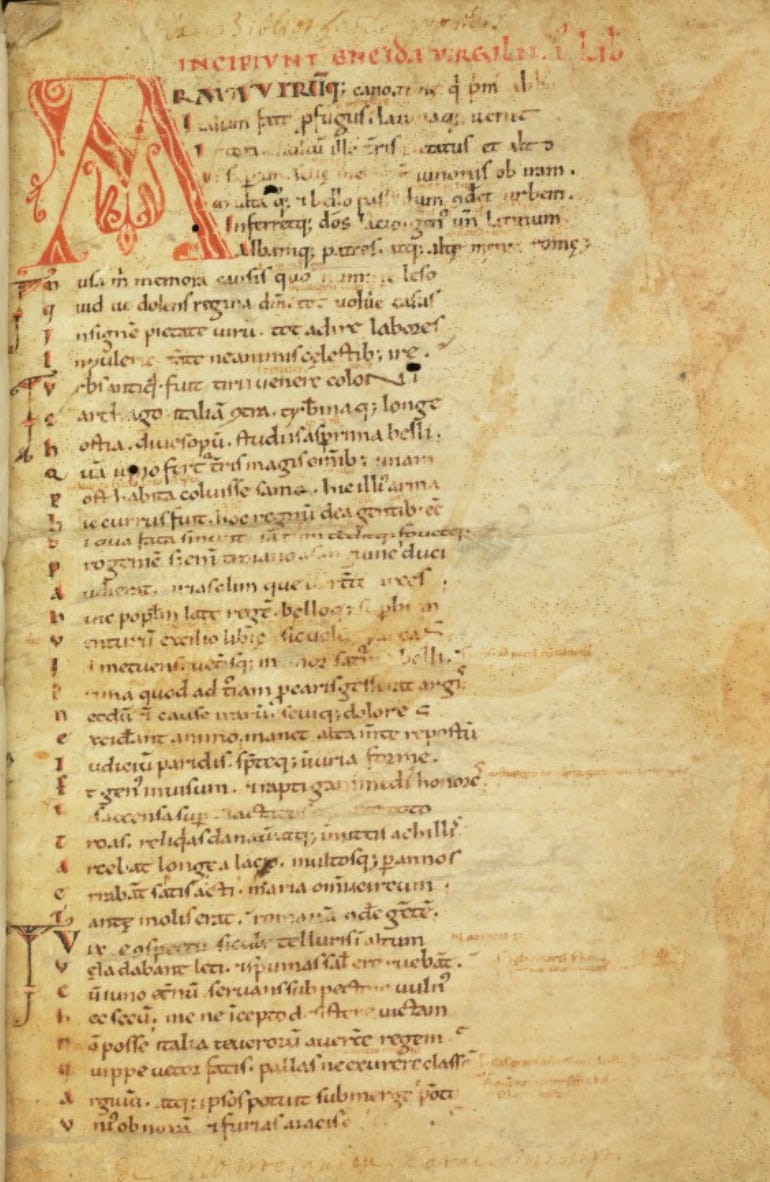Ancient bestsellers

A 12th-century copy of Virgil's Aeneid preserved in Cologny, Fondation Martin Bodmer, Cod. Bodmer 165
It has been estimated that a copy of Virgil's Aeneid cost the equivalent of 160 litres of wine in the Roman empire in the 4th century AD. The Aeneid was an instant bestseller, not least because it had been commissioned and sponsored by Octavian Augustus…
Keep reading with a 7-day free trial
Subscribe to Biblonia to keep reading this post and get 7 days of free access to the full post archives.

